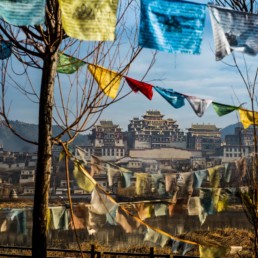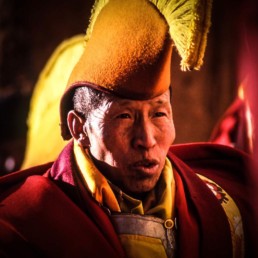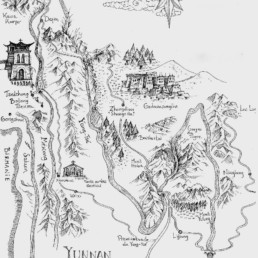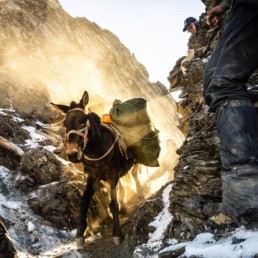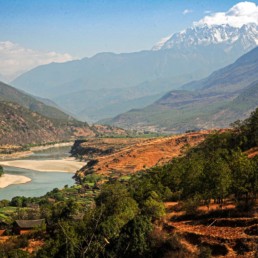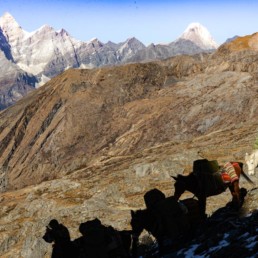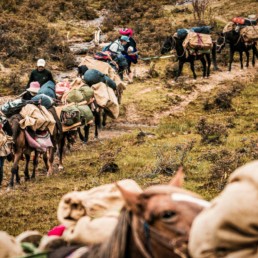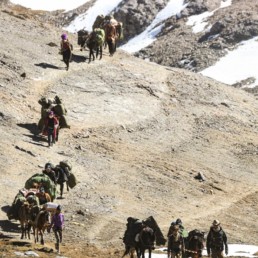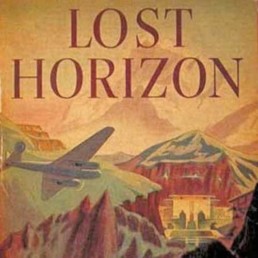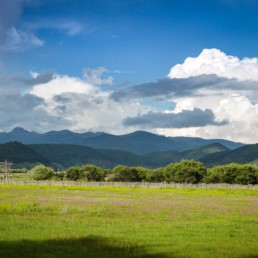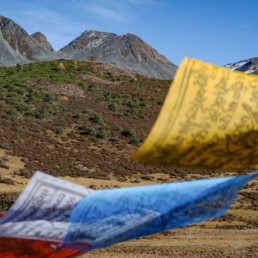Shangri-la
the gateway of the Himalayas
THE SHANGRI-LA PREFECTURE is located on the north-western tip of the province of Yunnan, bordering Sichuan and Tibet and its area is 24,000 km2. It consists of the districts of Shangri-La, Deqin and Weixi. The Prefecture of Shangri-La is marked by high mountains, deep valleys and two rugged rivers: Mekong and Yangtze and a high plateau where the city of Shangri-La is located. The average altitude of the Shangri-La Prefecture is 3,550 m and its highest point is the sacred mountain of Kawakarpo at 6,740 m.
Shangri-La
in the heart of Yunnan in the Tibetan Marches
LOCATED 700 HM NORTH OF KUNMING – the provincial capital of Yunnan – and 198 km from Lijiang, the town of Shangri-La is at an altitude of 3,200 m. It was not until 1992 that Shangri-la was opened to foreigners and tourism. From Lijiang, it takes three hours by road to reach Shangri-La. Since 2001, the local airport – Diqing – offers flights to several Chinese cities: Lhasa, Chengdu, Chongqing, Kunming, Guangzhou, Beijing and Shanghai.
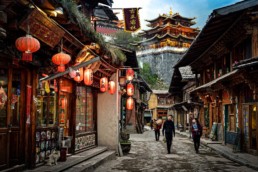
Shangri-La
myth & reality
THE NAME REFERS directly to the novel Lost Horizon, published in 1933 by the English American writer James Hilton.In his novel, Hilton describes Shangri-La as an inaccessible valley hidden at the heart of the Himalayas, in between Asia’s greatest rivers. Three American travelers, after their plane’s crash, discover an earthly paradise. Shangri-La’s lamasery, perched in front of the Karakul Mountain, is then governed by a former Jesuit, father Perrault. To those who accept the “big lama priest’s” initiations, father Perrault promises calm and depth, maturity, wisdom and clear enchantment of memory…
Belief of a hidden paradise
This book, written at the eve of World War Two’s big holocausts, incarnates the hope of a better life in a lost valley of Tibet, in a utopian city where it would be good to slowly age.
Adapted to the cinema in 1937 by Frank Capra, the myth of Shangri-la is inspired by ancient myths, that of Shambala and Tantra Kalachakra present in Hinduism, Buddhism and the original Tibetan religion, Bon. Belief of a hidden paradise where the functioning of the community is based on moderation, where men will see suffering and desire equally, it is obvious, a utopia!

